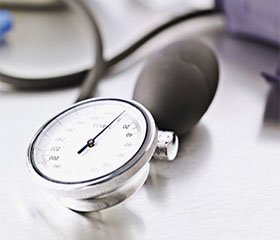Международный неврологический журнал 4 (74) 2015
Вернуться к номеру
Assessment of central hemodynamics by daily monitoring of blood pressure in hypertensive encephalopathy in elderly patients
Авторы: Yavorsky V. - Kyiv City Clinical Hospital №8
Рубрики: Неврология
Разделы: Клинические исследования
Версия для печати
hypertensive encephalopathy, hypertension, ambulatory blood pressure monitoring, diagnostics
Among the many clinical trials related to the study of chronic cerebral ischemia in elderly patients, proven relationship hypertension (AH) with the process of aging. Many histological changes that occur with age in the walls of blood vessels, similar to the changes due to atherosclerosis, however, the role solely of atherosclerosis in the pathogenesis of hypertensive encephalopathy in elderly patients is controversial [1,2,3]. In the study of autopsy samples show that the extensibility of vascular walls decreases with age, but the quantitative relationship of aging and atherosclerosis can not be divided, and some populations proven link prevalence of atherosclerosis and systolic blood pressure (BP). Preventing complications (often fatal), prolong life and improve its quality, which is achieved by preventing complications of hypertension, support satisfactory physical, mental and emotional state of these patients is relevant area of medicine [4,5].
The aim of the study was to assess the state of central hemodynamics by daily monitoring of blood pressure in hypertensive encephalopathy in elderly patients.
Depending on the course of hypertension patients were divided into two groups: Group 1 - 45 elderly patients at GE II stage against the backdrop of hypertension; Group 2 - 45 patients with average age for GE on a background of stage II hypertension. At the surveyed patients had a high incidence of overweight (BMI - 30,11 ± 3,12 kg / m2) and abdominal obesity (68.9%), low levels of physical activity (51.1%). Characteristic was left ventricular hypertrophy (LVH), which was significantly (p <0.05) higher in patients found the first group than the second group of patients (100% and 86.7% respectively). Hiperholisterynemiya significantly more (p <0.01) in patients met the first group to 77.8% and 57.8% of patients in the second group. Of particular danger is the prevalence of smoking, which reaches up to 37.8% among patients of group 1 and 20.0% among patients 2 groups. To control group included 29 people (13 men and 16 women) with normal blood pressure, the average age amounted to 64,0 ± 3,2 years.
All patients were hospitalized in the neurological department of the Kyiv City Clinical Hospital № 8 and were hospitalized only routinely.
Results and discussion. Analysis of daily monitoring of blood pressure in elderly and middle age when GE was characterized by high blood pressure, which is considered a major risk factor for cardiovascular disease. The study features a daily profile of blood pressure in patients examined allowed to obtain significantly greater clinical information compared to the traditional way of measuring blood pressure and expanded diagnostic capabilities [9,10]. The reliability of connection between indicators DMAT, the degree of target organ damage and risk factors of cardiovascular complications in patients with different types of hypertension course, important for the stratification of patients according to the degree of blood pressure parameters change daily.
Was estimated the average level of blood pressure at night, night and day on the results DMAT in elderly patients of the first group before and after treatment and in the control group. When comparing the performance DMAT in patients before treatment and after treatment obtained significant difference (p <0,01) between indicators.
Established that BP variability decreases steadily against the background of high blood pressure, so the evaluation data DMAT in these patients we preferred load index, detected in these patients negative correlative relationship (r = -0,51) between SBP variability (12 2 ± 0,1 mm Hg. in.) and index time (76,4 ± 14,3%) by day period measurements, indicating the growth of "critical" level of SBP during this period of the day from the reduction of SBP variability.
Due to many world data studies of risk factors for cardiovascular events in patients with hypertension remain crucial indicators SBP, DBP and ADP.
In assessing the level of perfusion SPECT data of the brain in patients with ET was in the right hemisphere - 39,0 ± 3,7ml / 100 g / min., The left - 38,4 ± 3,7 ml / 100 g / min. which indicates a marked decrease in performance for the control group. As control data were used the results of studies in patients with healthy patients of similar age group, according to which the amount of cerebral blood flow (OMC) right hemisphere was 43,1 ± 3,8 ml. / 100 g / min. And left - 42,2 ± 3,3 ml / 100 g / min. (Murashko NK, Makeev SS, 2006). In the group of patients with hypertension GE middle age OMC in the cerebral hemispheres made: the right hemisphere 40,3 ± 3,8 ml / 100 g / min., And the left hemisphere - 39,9 ± 3,5 ml / 100 g /hv.Dovedeno that expressed perfusion of the brain is at 40.0% of elderly patients in the form of bilateral focal changes, whereas the average age of patients these changes were not observed. The average coefficient of asymmetry (SC) in the areas of reduced perfusion in group 1 patients is 0,84 ± 0,1, while in group 2 - 0,89 ± 0,1, which also indicates a more pronounced impaired blood flow in sloping patients. The data suggest the presence of clear signs of cerebral perfusion in most elderly patients with ET on a background of hypertension, as evidenced by data breach OMC hemispheres in the brain, reducing availability for local areas or mizhpivkulovoyi perfusion asymmetry,
The research grounded diagnostic features for further consideration of the prevention and treatment of elderly patients with hypertensive encephalopathy background AG.

